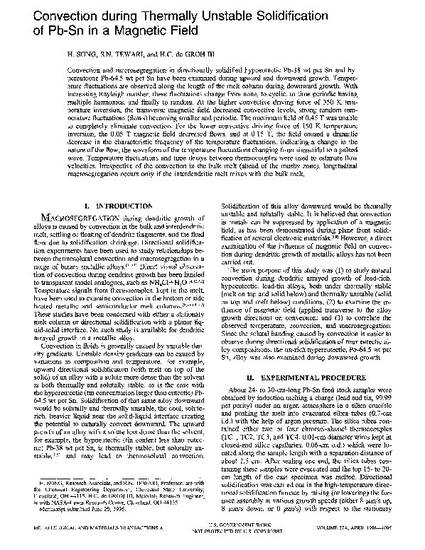
Convection and macrosegregation in directionally solidified hypoeutectic Pb-38 wt pct Sn and hypereutectic Pb-64.5 wt pct Sn have been examined during upward and downward growth. Temperature fluctuations are observed along the length of the melt column during downward growth. With increasing Rayleigh number, these fluctuations change from none, to cyclic, to time periodic having multiple harmonics, and finally to random. At the higher convective driving force of 350 K temperature inversion, the transverse magnetic field decreased convective levels, strong random temperature fluctuations (flows) becoming smaller and periodic. The maximum field of 0.45 T was unable to completely eliminate convection. For the lower convective driving force of 150 K temperature inversion, the 0.05 T magnetic field decreased flows, and at 0.15 T, the field caused a dramatic decrease in the characteristic frequency of the temperature fluctuations, indicating a change in the nature of the flow, the waveform of the temperature fluctuations changing from sinusoidal to a pulsed wave. Temperature fluctuations and time delays between thermocouples were used to estimate flow velocities. Irrespective of the convection in the bulk melt (ahead of the mushy zone), longitudinal macrosegregation occurs only if the interdendritic melt mixes with the bulk melt.
Available on publisher's site at: http://www.springerlink.com/content/g1l8mn2h83l5663m/.
